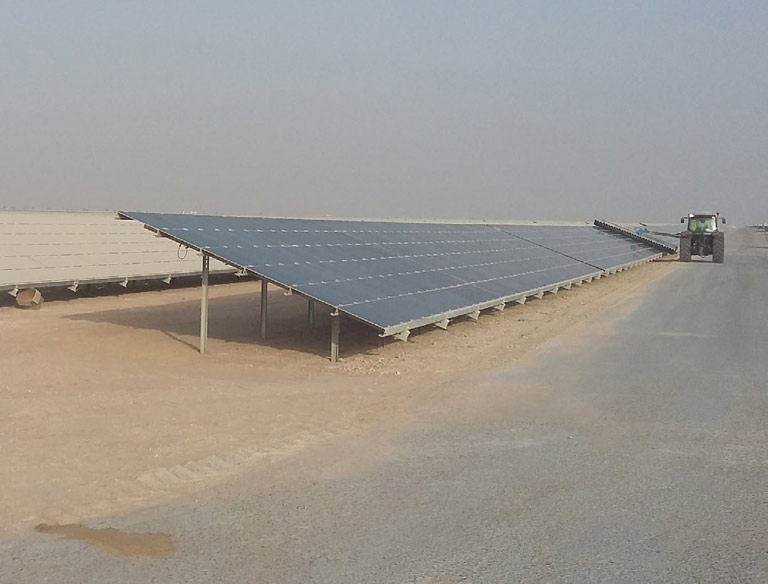Solar Deployment in Desert Areas
A photovoltaic system has to withstand a lot. At any given time of year, and around the clock, it is exposed to all kinds of weather and atmospheric influences. Sunlight, rain and extreme temperature fluctuations – the photovoltaic modules have to be tough. There is also wind, dust or even (desert) sand. In this way, weather and wind combine to cause soiling that affects the solar modules. This has lasting consequences: This is because impurities essentially reduce the solar system’s yield. Therefore, any dirt found on PV systems must always be removed as quickly as possible before the sun is allowed to etch the soiling into the surface, thereby creating so-called “hot spots”.

If sand is allowed to rest on PV systems, you should always carry out quick and effective cleaning measures. The following figures illustrate just how important it is to have sand removed from PV systems. If the sand found on PV systems is removed regularly, an average yield gain of roughly 15 per cent can be achieved. Based on a 100 kWp plant, this yields an additional amount of approx. 15,000 kWh per year. Regularly having the sand removed from PV systems is essential from an economic standpoint.
However, in order to remove desert sand quickly and effectively from solar systems without fail, you need a specific cleaning solution.
Normally, photovoltaic systems are cleaned with cold water, in order to be able to use the high-yield hours of sunshine needed to produce electricity. But in desert regions, and in addition to the problem of the temperature difference between the plant itself and the water, there is also the issue of the close arrangement of PV module rows. This makes cleaning considerably more difficult and, in a worst-case scenario, even leads to damage to the system.

